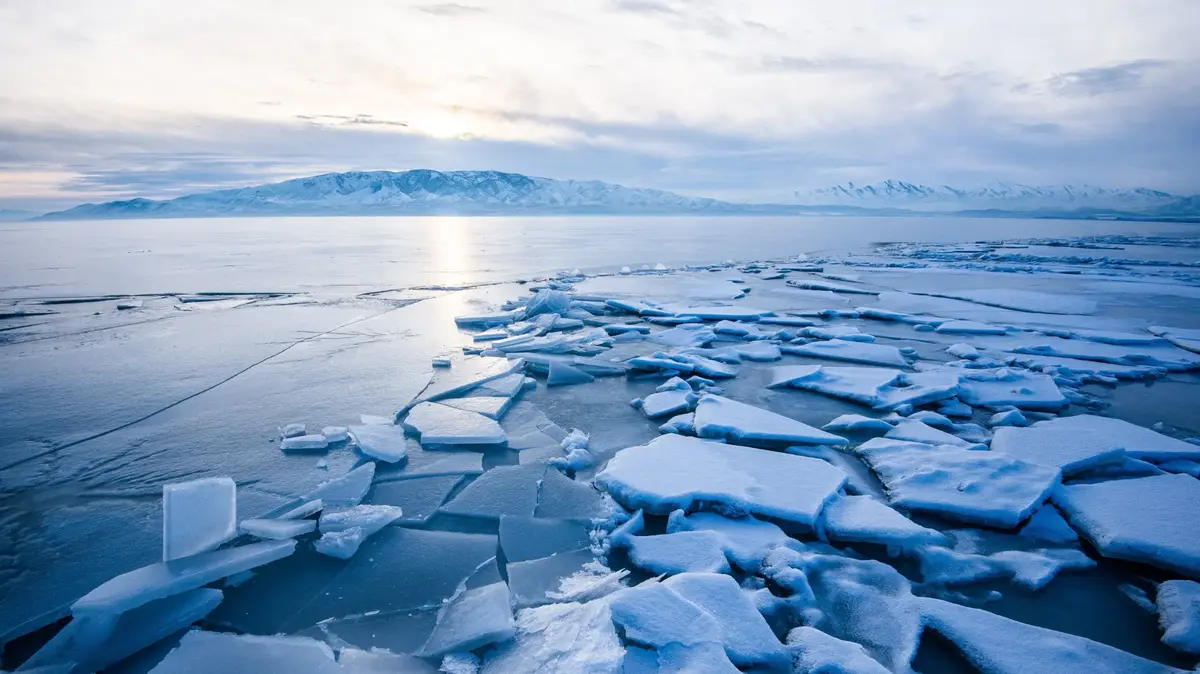Enlarge image
Iceberg erupted on Pine Island Glacier in 2018
Photo: Earth Observatory / NASA
It is not good news that the "Satellite Image of the Week" has in store this time.
The picture takes us on this Easter Monday to the west of Antarctica, to the Pine Island Glacier.
Here lies one of the largest glacier systems on the West Antarctic Ice Sheet.
With an area of around 162,000 square kilometers, it is more than twice the size of Bavaria and makes up ten percent of the ice in West Antarctica.
The Pine Island Glacier transports its cold cargo over 250 kilometers in a gigantic shelf into the Amundsen Sea.
Major crashes occur regularly.
That would not be an unusual process so far, because the glacier calving is a natural process.
After all, they gain in mass again, for example through snowfall.
What worried researchers in recent years, however, was how quickly the glacier is losing its ice into the sea.
The mass balance has turned increasingly negative, the edge of the ice shelf that floats on the sea, the so-called grounding line, has migrated back significantly in recent years.
And the flow rate has also increased.
No glacier in the world currently loads more ice into the sea than Pine Island.
The fear in such observations was a scenario in which the glacier passed a point at which it can no longer be saved.
Then, like a house of cards from which you have taken so many cards that the entire house collapses, a mechanism is set in motion in which the entire glacier disappears.
Researchers at Northumbria University in the UK believe that it could actually be too late for the Pine Island Glacier.
In a study that appeared in the specialist magazine “The Cryosphere”, they modeled which so-called tipping points play a role there.
Enlarge image
In February 2020, a 300 square kilometer iceberg broke off Pine Island Glacier.
The image of the Esa satellite »Sentinel-2« shows the recent demolition in detail.
It only broke into smaller pieces within a day.
Photo: ESA
They identified several of these early warning indicators that contribute to the instability of the ice sheet.
The most important one is achieved when the seawater near the glacier warms up by more than 1.2 degrees Celsius on a permanent basis.
"That would lead to a retreat of the entire glacier, which could initiate a collapse of the West Antarctic ice sheet," writes the team around the glaciologist Sebastian Rosier in the study.
Photo: NASA / Reuters
Unfortunately, this scenario is very realistic.
Because of the long-term warming in the circumpolar deep water and changed winds in the Amundsen Sea, the ice shelf is exposed to warmer waters for longer periods of time.
That makes temperature changes of this order of magnitude more and more likely.
“The potential for this region to have reached a tipping point has already been described in the past.
But our study is the first to confirm that Pine Island Glacier actually exceeds this critical threshold, ”says Rosier.
The researchers developed and used the latest computer models for the study.
Such simulations are always fraught with uncertainty and a challenge, as Rosier admits.
But their methodology makes it much easier to identify potential future tipping points, it is said.
Pine Island Glacier is already losing around one meter of its two-kilometer-thick ice every year.
In the area of the thinner ice shelf it is even more.
The melting of Pine Island Glacier and its neighboring Thwaites Glacier are already responsible for around ten percent of global sea level rise.
It is estimated that the melting of the ice in West Antarctica would raise sea levels by more than three meters.
Researchers had observed that warmer water from the circumpolar current in the region has been pushing under the ice shelf for decades and melting it from below.
The Antarctic Peninsula is one of the fastest warming regions on earth.
On average, it is now almost three degrees warmer than it was 50 years ago.
In 2017, scientists at the Alfred Wegener Institute discovered by mapping the sea floor with the research vessel »Polarstern« that submarine ridges on the Pine Island Glacier had stabilized the ice shelf.
But as a result of the melting, the ice lost contact with the land mass and became unstable.
It could then flow unhindered into the sea.
joe





